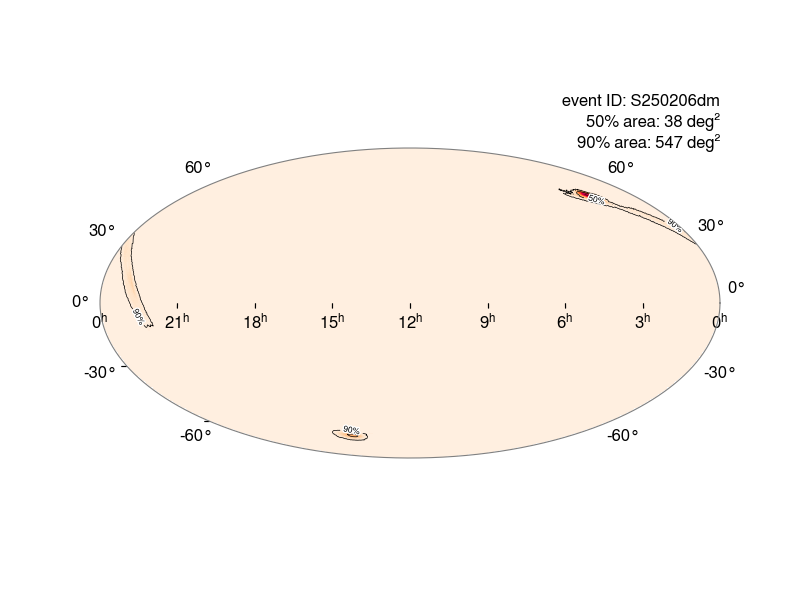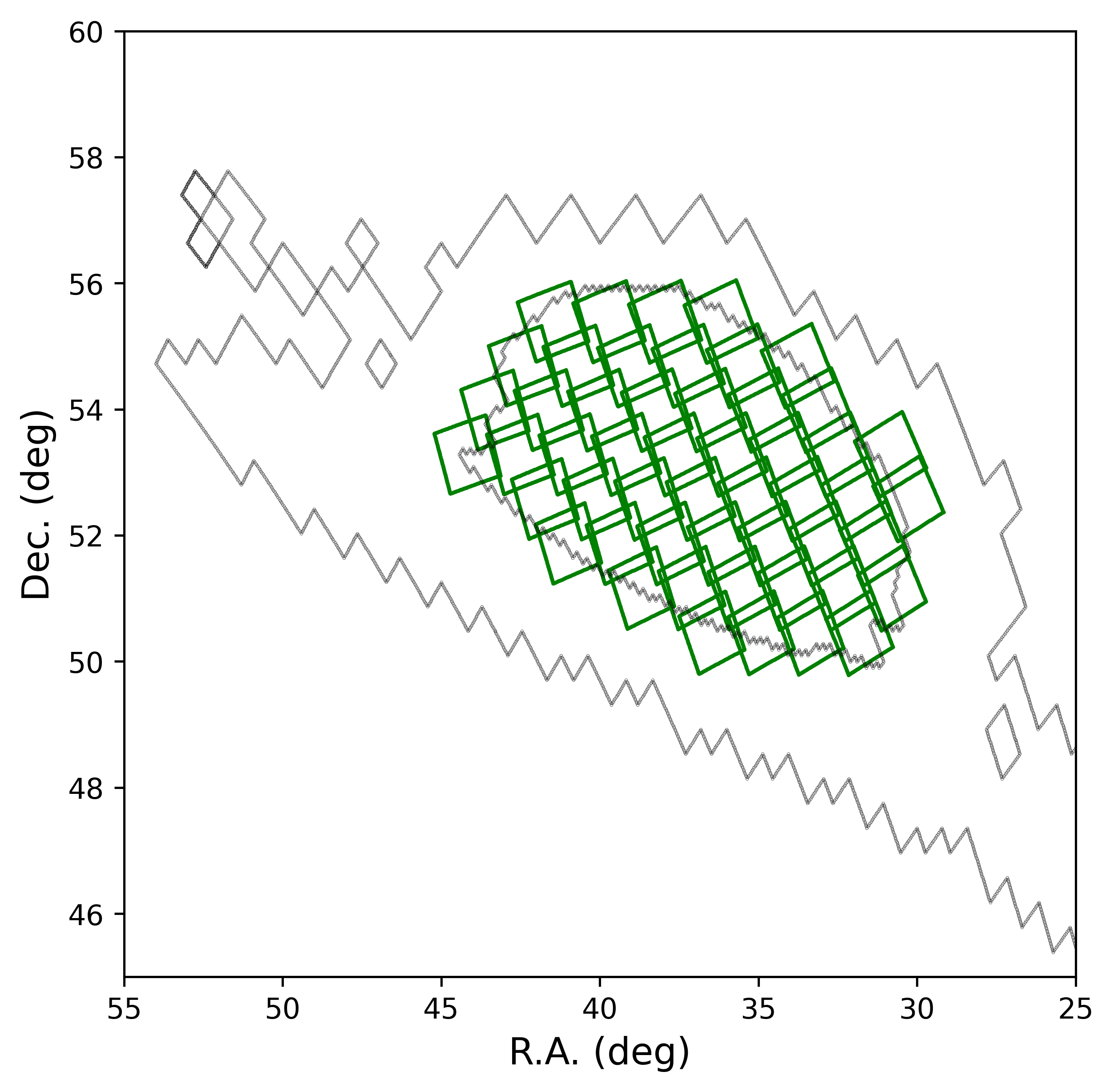LIGO/Virgo/KAGRA S250206dm
LIGO/Virgo/KAGRA S250206dm
https://gracedb.ligo.org/superevents/S250206dm/
HasNS >99%
HasRemnant 13%
Luminosity distance 373 +/- 104 Mpc (a posteriori mean +/- standard deviation)

EP follow-up observations
EP has performed two rounds of follow-up observations for S250206dm.
- In the first round, a series of follow-up observations for S250206dm, including the observations with WXT covering part of the updated 90% credible region of the sky map and the observations with FXT targeting the potential host galaxies, are made. The sky coverage of these observations are shown below. Detailed observation schedule can be downloaded here.
- In the second round, FXT has conducted multiple tiling observations to cover the 50% credible region of the sky map. The sky coverage of these observations with FXT are shown below. Detailed observation schedule can be downloaded here.

Data analysis
We conducted the data analysis based on the two rounds of follow-up observations carried out by EP-FXT between 7th Feb. and 18th Feb 2025, covering 45 sq. deg. in the 90% credible region (36 sq. deg. in the 50% credible region). By cross-matching FXT sources with the galaxy sample provided by GLADE+ (GCN 39235), we have compiled a preliminary list of X-ray sources located within 30 arcsec of the galaxies in the sample.
We then arranged follow-up observations for sources meeting either of the following criteria: (1) infrared color indicating inactive (W1-W2<0.5), or (2) FXT flux exceeding historical detection (or upper limits) with the X-ray emission less likely from other known sources (e.g., flaring stars) within the FXT error circle. Preliminary analysis indicates that two sources show notable variability. The flux of EPF_J022842.7+542051 declined during the FXT observations, and spectral analysis indicates that the X-ray emission might originate from the nearby star TYC 3687-1131-1. EPF_J022731.1+551813 was not detected in subsequent ToO observations and therefore shows a decline in flux. Yet it is noted that a stellar flare origin of EPF_J022731.1+551813 can not be ruled out.
*Observation schedules and figures are provided by Jingwei Hu from Einstein Probe Science Center.